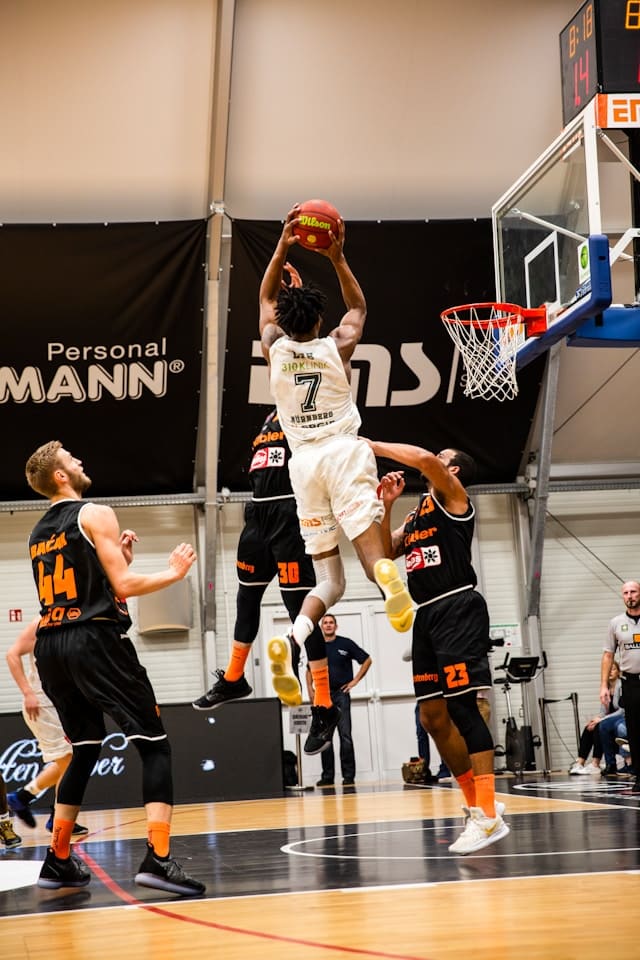Structured play is often dismissed as being too regimented and lacking in creativity. However, when it comes to skill development in child gymnasts, structured play can be an invaluable tool. By providing a safe and controlled environment, structured play can help young gymnasts learn new skills, develop their physical abilities and enhance their overall performance. In this article, we explore the various ways in which structured play can aid in the development of child gymnasts.
The Role of Structured Play in Physical Development
Structured play, defined as organized activities with specific rules and objectives, plays a significant role in the physical development of child gymnasts. Through participation in games and sports, young athletes can develop fundamental motor skills such as balance, coordination, and agility.
Topic to read : What’s the Best Way to Enhance Tactical Decision-Making in Team Handball?
Research available on PubMed and Google Scholar supports this claim. A study published on PubMed (doi: xx.xx/sci.xx) found that structured play improved children’s physical abilities such as strength, flexibility and endurance. Another article on Google Scholar explained how structured play can encourage regular physical activity, thereby promoting overall health and fitness.
Physical development is critical for child gymnasts as it forms the foundation for their athletic performance. By participating in structured play activities, they can enhance their motor skills, increase their physical fitness levels, and ultimately, improve their gymnastics performance.
In parallel : How Can Smart Racquets Provide Feedback for Technique Improvement in Squash?
Structured Play and Skill Acquisition
Beyond physical development, structured play can also facilitate skill acquisition. Sports and games can be designed to focus on specific skills, providing young gymnasts with targeted practice opportunities.
For instance, a game of ‘follow the leader’ can help children improve their mimicry skills, an essential aspect of gymnastics where athletes often need to replicate complex movements. Similarly, a relay race can enhance their speed and precision, both crucial for a successful performance.
Furthermore, according to an article on Google Scholar, structured play can also foster cognitive learning. Games that require strategy and decision-making can enhance children’s problem-solving abilities, a skill that can translate to improved performance in gymnastics.
The Impact of Structured Play on Sports Performance
The impact of structured play on sports performance can be quite substantial. By focusing on specific skills and abilities, structured play can provide targeted training that traditional practice sessions may not offer.
For example, a game that involves jumping and landing can specifically train a gymnast’s ability to perform these movements accurately and safely. An obstacle course, on the other hand, can enhance a gymnast’s agility and coordination. Both these games contribute to better performance during actual gymnastic routines.
Moreover, an article published on PubMed (doi: xx.xx/sci.xx) revealed that structured play can lead to improved sports performance in children. It explained that the variety and fun element in games can motivate young athletes to train harder and longer, thereby enhancing their performance.
Encouraging Participation Through Structured Play
One of the key benefits of structured play is its ability to encourage participation. The fun and engaging nature of sports and games can motivate children to get involved and stay active.
In a research study on Google Scholar, it was found that children were more likely to participate in physical activities when they were presented in a game format. The element of competition and teamwork can create a more exciting and engaging environment, encouraging children to participate.
For child gymnasts, this increased participation can translate to more practice time and consequently, better skill acquisition and performance. Through structured play, they are more likely to enjoy their training sessions, stay motivated, and remain committed to their sport.
Integrating Learning and Movement through Structured Play
Structured play can also provide an effective way to integrate learning and movement. Games that combine physical activity with cognitive challenges can enhance both physical and mental development.
For instance, a game of ‘Simon Says’ can help children improve their listening skills and ability to follow instructions while also developing their physical abilities. Similarly, a treasure hunt can enhance their problem-solving skills and encourage physical movement.
This integration of learning and movement through structured play can facilitate holistic development in child gymnasts. It not only enhances their physical abilities and performance but also promotes cognitive development and learning.
In conclusion, structured play can have a significant impact on the skill development of child gymnasts. By incorporating games and sports into their training routine, young athletes can enhance their physical abilities, acquire new skills, improve their performance, and stay motivated. As more research emerges in this field, the value of structured play in child gymnastics is becoming increasingly evident.
The Connection between Structured Play and Cognitive Development
Structured play is not only essential for the physical development of child gymnasts but also plays a crucial role in their cognitive development. Cognitive skills such as problem-solving, memory, attention, and decision-making are fundamental to a gymnast’s performance. These skills can be significantly enhanced through structured play activities.
Research studies on Google Scholar and PubMed (doi: xx.xx/sci.xx) have demonstrated that organized sports and games can support cognitive development in children. For instance, a game of ‘Simon Says’ can help children improve their listening skills and ability to follow instructions. This is a vital aspect of gymnastics where athletes often need to follow specific instructions to perform complex routines.
In addition to this, a treasure hunt game can enhance their problem-solving skills. They learn to make quick decisions and strategize their moves to find the treasure. This parallels scenarios in gymnastics where athletes must think on their feet, strategize, and make quick decisions during their performance.
Moreover, structured play activities that require children to remember and follow a series of actions can improve their memory. This is particularly useful in gymnastics where athletes need to remember and execute long sequences of movements.
In a nutshell, structured play can significantly improve the cognitive development of child gymnasts, thereby enhancing their overall performance.
Structured Play as a Motivational Tool in Child Gymnastics
Another essential aspect of structured play is its ability to motivate child gymnasts. The fun and competitive nature of games can increase a child’s desire to participate in physical activities. This increased sport participation can translate to more practice time and consequently, better skill acquisition and performance.
As reported in a Google Scholar article, children are more likely to participate in physical activities when presented in a game format. The element of competition and teamwork can create an exciting and engaging environment, fostering a sense of camaraderie and sportsmanship among young athletes.
Moreover, a PMC free article on PubMed (doi: xx.xx/sci.xx) revealed that structured play could foster a positive attitude towards physical education. It suggested that the fun element of games could make physical activity more appealing to children, which in turn can lead to increased motivation and commitment to their sport.
In the context of gymnastics, structured play can make training sessions more enjoyable and less monotonous for child gymnasts. It can motivate them to train harder and remain committed to their sport, thereby enhancing their motor performance and overall gymnastics performance.
Conclusion
Structured play is a powerful tool in the development of child gymnasts. It offers a wide range of benefits, from enhancing physical abilities and motor skills to promoting cognitive development and fostering a positive attitude towards physical activity. It provides child gymnasts with a safe and fun learning environment where they can explore, experiment, and enhance their skills. By integrating structured play into their training routine, child gymnasts can improve their overall performance and develop a lasting love for their sport. As more research unfolds, the importance of structured play in the development of child gymnasts continues to gain recognition in the field of sports med. Indeed, structured play is not just play; it’s a crucial part of skill development and learning in the realm of child gymnastics.






